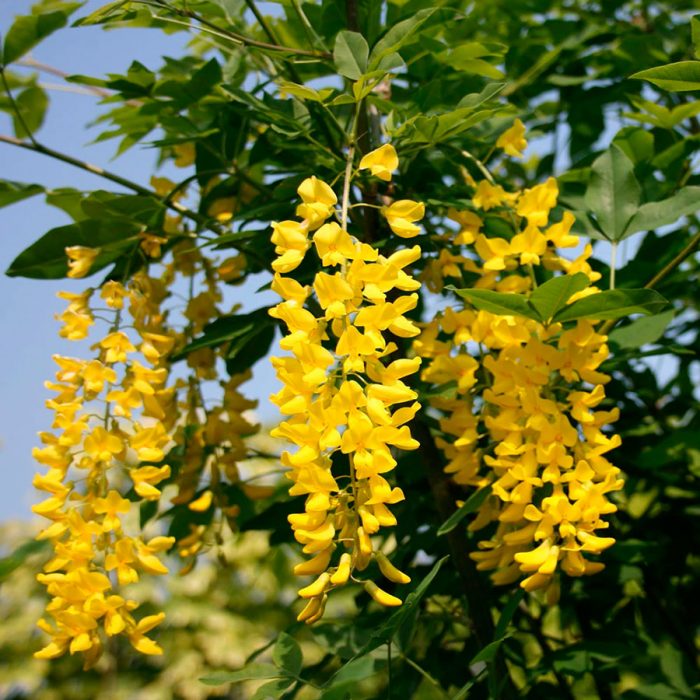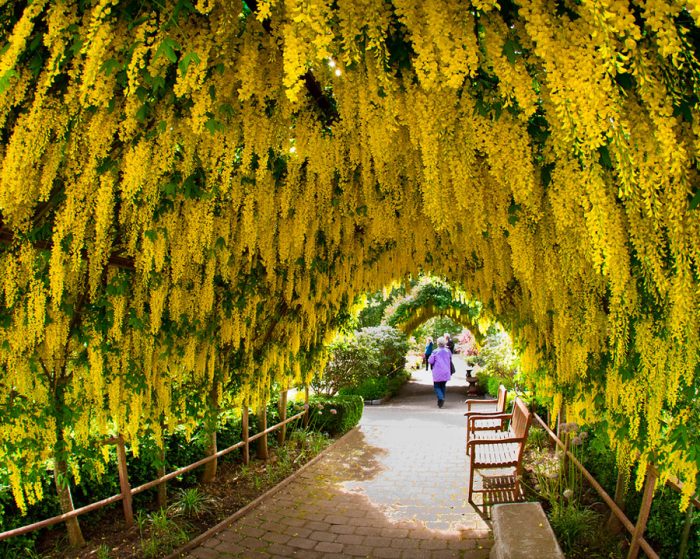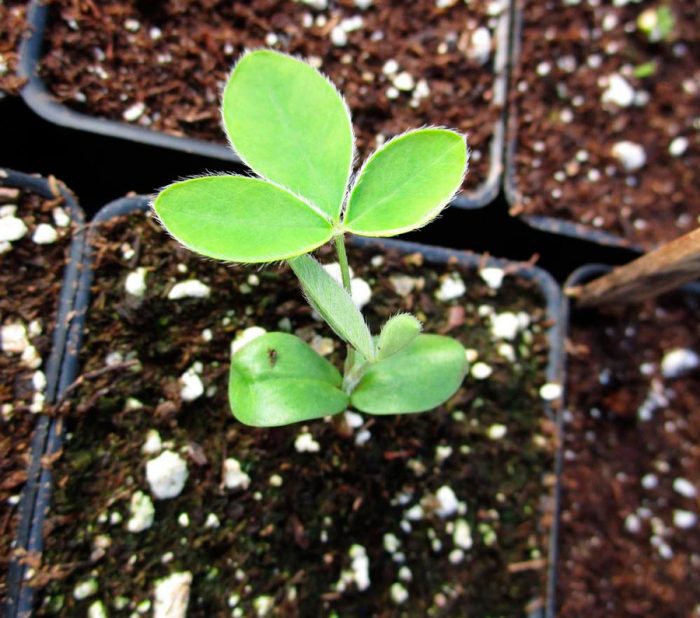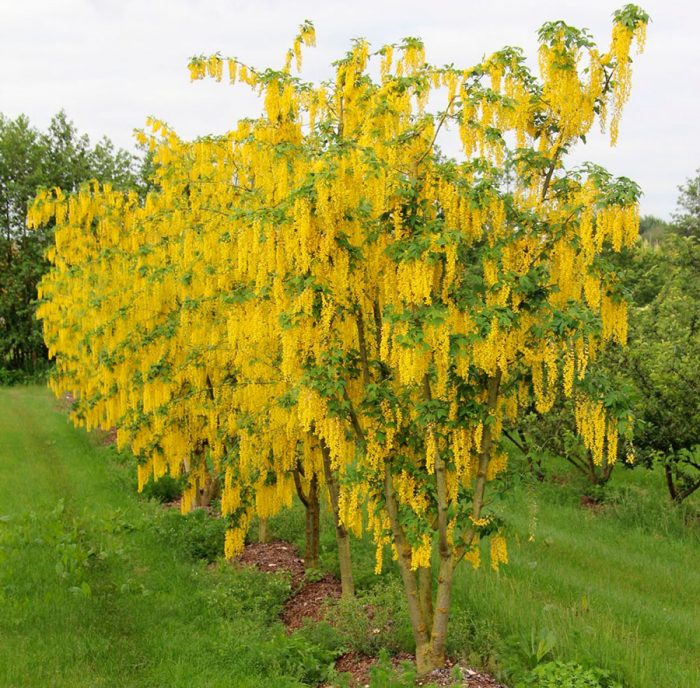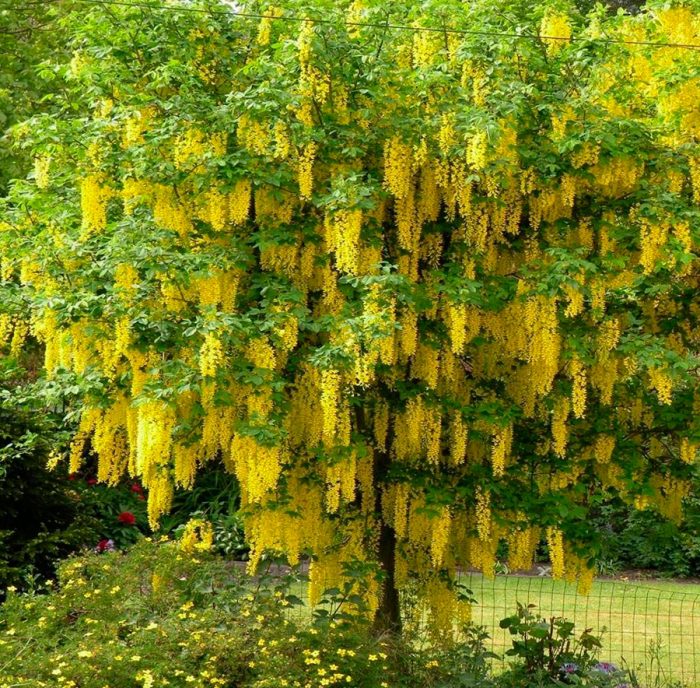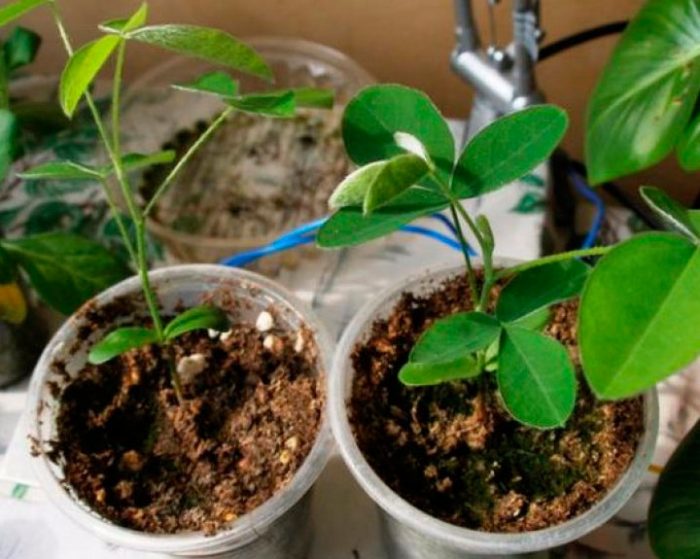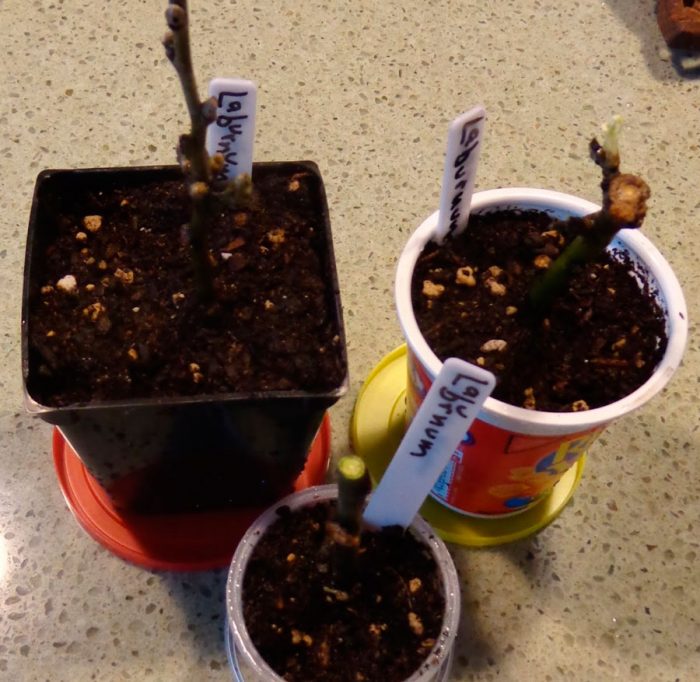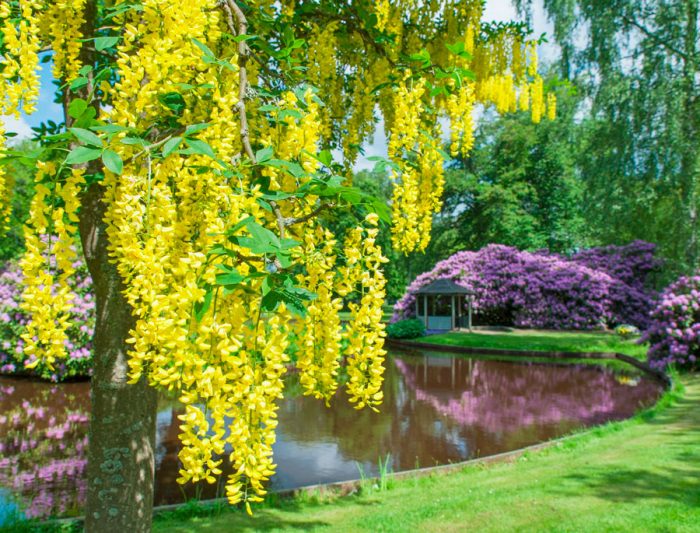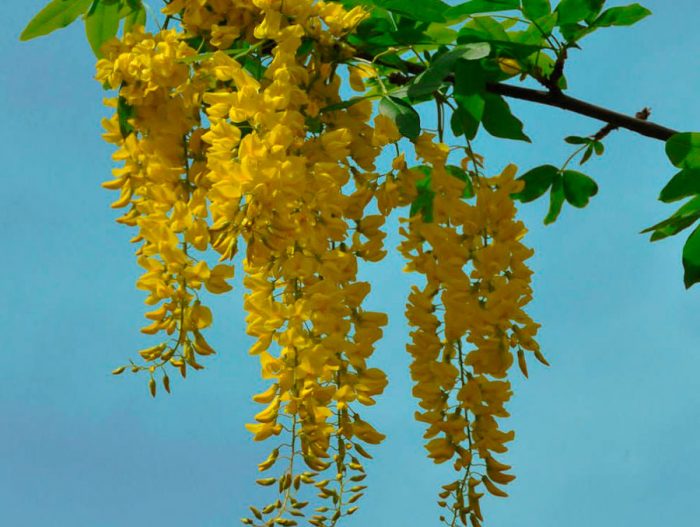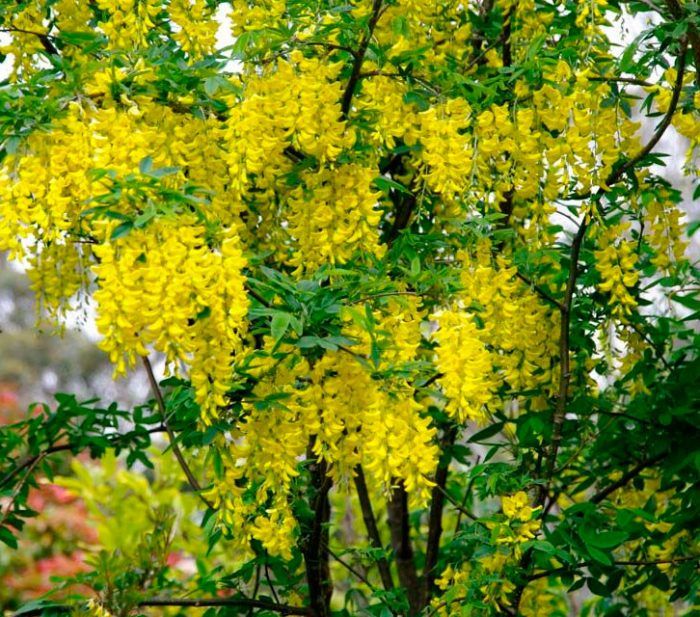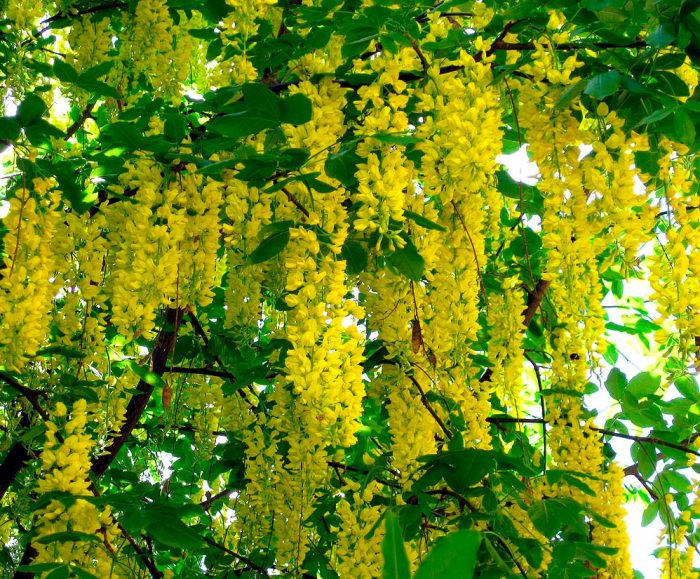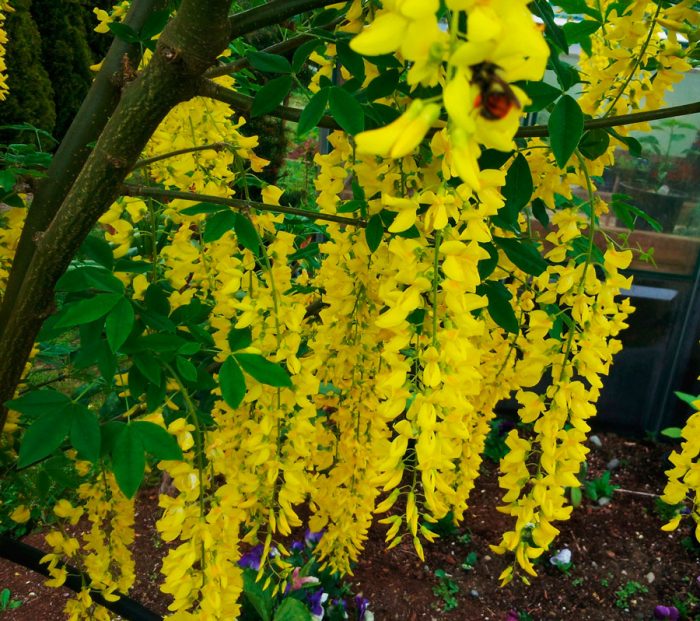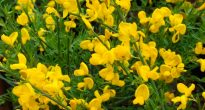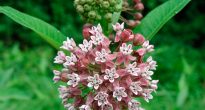The legume plant, which is also called Laburnum, belongs to the legume family. This genus is represented by undersized trees or deciduous rather tall shrubs. This genus includes a couple of species and one interspecific hybrid. Under natural conditions, laburnum is found in the Caucasus, South and Central Europe, and also in Asia.
During flowering, this plant looks very impressive, due to which it is very popular with gardeners. It is also popularly called “golden rain bean”, and this is due to the fact that the flowering bush is decorated with long yellow inflorescences hanging in a cascade.
Growing a legume in your garden is easy, but only if you find the most suitable area for it and take proper care of it.
Content
Features of bean
The height of the bean plant depends on what species and variety it belongs to, and can vary from 3 to 7 meters. Its crown is spreading with a diameter of 3 to 4 meters. It consists of flexible stems that can be straight or weeping. Before the plant blooms, trifoliate long-stemmed oval-shaped leaf plates grow on it. There is a slight pubescence on the seamy surface of the foliage, as well as on the shoots.
Such a plant blooms in the last days of April, and fades in June. Small flowers of a rich yellow color have a shape similar to butterflies. They are part of lush brushes, which are 0.2–0.5 m long. A large number of inflorescences are formed on one bush. In place of wilted flowers, fruits are formed, which are narrow and dry pods, reaching 50-60 mm in length. They fully ripen in September. When planting laburnum in a region with a cold climate, you need to take into account that in such conditions it will bloom more poorly and for a short time.
Planting legumes outdoors
Seat selection
A suitable spot for the bean plant should be well lit and warm, and well protected from strong gusts of wind. Please note that the tree blooms more poorly in shade, and young plants with strong winds in winter may suffer from frost. The soil for such a plant needs well-drained, moderately moist and nutritious with an alkaline pH.However, it grows quite well on acidic sandy poor soil.
Choose a place for planting a bean with special care, since it will not be possible to transplant it in the future. The fact is that it has a massive root system, which is simply impossible not to damage during transplantation.
Landing features
If the seedling has a closed root system, then it can be planted in the ground from spring to autumn. Plants with an open root system are planted either in the middle of autumn or in early spring. If the soil on the site is clay, then a good drainage layer should be made in the planting pit at the bottom, for this you can use large expanded clay or pieces of brick. The soil, which will fill the hole, must be mixed with sand.
Dip the roots of the seedling into the hole and cover them with soil mixed with compost. After the bush is planted, compact the surface of the trunk circle and water it well. To significantly slow down the evaporation of moisture from the soil and the growth of weeds, the surface of the trunk circle is covered with a layer of mulch (bark or compost). If the tree is single-stemmed or on a trunk, then until it gets stronger and gains strength, it is tied to a support.
Bean Care
Watering
The legume is drought-resistant. However, while the plant is young, it will need regular watering once every 7 days. If there is a long hot dry period, then the frequency of watering young trees should be increased. A large adult tree is watered only if there has been no rain for a long time.
Wintering
This culture is referred to as winter-hardy plants. However, until the legume is two or three years old, it can suffer from the cold in winter, especially if the frost is very strong. If you grow a Vaterer hybrid, then for the winter it must be covered with agrofibre. Since this shrub has a sloping crown, snow can accumulate on it, which often leads to injury to the stems. To avoid this, it is necessary to shake off the snow from the plant if necessary.
Pruning
Such a plant tolerates pruning very hard. After it, it weakens greatly and takes a very long time to recover. If you need to cut out dried or injured branches, then such pruning is carried out in early spring. If you need to cut a healthy branch, then be sure to protect the cut site from infection, for this it is coated with garden varnish.
After flowering, a large number of fruits can form on the tree, which takes a lot of energy from the plant. Therefore, experienced gardeners recommend cutting them off immediately after formation.
Fertilizer
Beanberries are fed in the spring. For this, the soil of the trunk circle is dug up, adding compost to it.


Watch this video on YouTube
Reproduction methods
Growing from seeds
Bobovnik reproduces very well by self-seeding. However, if such a need arose, then you can grow seedlings from seeds on your own. In order for the seeds to sprout, they must be cold stratified. There are 2 options:
- Sow seeds in your garden in late fall. During the winter they will undergo natural stratification. Before sowing, it is recommended to place the seed in hot water for a while so that the dense shell becomes softer.
- The seeds can be mixed with sand and placed on a refrigerator shelf, where they will be stored at 0 to 1 degrees until spring. Sow stratified seeds in open ground as it gets warm.
After the plants that have emerged from the seeds grow and get stronger, they can be transplanted to a permanent place. The bushes are taken along with an earthen lump. Such a plant will bloom only in the third or fifth year from the moment the seedling appears.
Cuttings
Legume also reproduces well by cuttings.To do this, in June you will need to prepare non-lignified cuttings. Please note that lignified cuttings are used to propagate the Vaterer hybrid, which are cut in March. In length, they should reach from 15 to 20 centimeters. Remove all lower leaf plates from the segments, and the place of the cut is treated with a root growth stimulator. Plant the cuttings for rooting in a mixture of sand and peat.
When the cuttings are planted, they are carefully watered and covered with a transparent cap (glass jar, bag, etc.). Remember to keep the soil moist at all times. When the cut is rooted, wait 30 days and transplant it into the garden. During the first three years, the near-stem circle of a young plant in late autumn must be covered with a thick layer of mulch (spruce branches or foliage).
How to propagate by layering
This method is only suitable for those plants that have side shoots. In a low-growing shoot, an incision is made on the underside (facing the soil surface) closer to the base. Bend the stem down and place it in a shallow (10 to 20 mm) trench with the cut side down. Fix it in this position and cover it with nutritious soil. A year later, if the cuttings begin to grow actively, then they are separated from the parent bush and planted in a permanent place.
Bobovnik in landscape design
Bobovnik looks great next to flowering and ornamental-deciduous shrubs (for example, barberry, buddleya, spirea, azalea, etc.), as well as not very tall conifers. It can also be used for single planting. And this culture is also suitable for decorating gazebos, pergolas and trellises, since it has drooping flexible stems.
Most often in the garden, laburnum is used to create awnings, arches and tunnels. At the top of the tunnel, the stems are arranged horizontally, which stimulates the lush flowering of the legume. This plant also looks very impressive next to wisteria. Phlox, hydrangea, roses, etc. look great against the background of drooping bean stems.
Diseases and pests
Bobovnik is highly resistant to diseases. However, due to increased air humidity or due to stagnation of liquid in the ground, a fungal disease can develop on the bush. In the affected bush, gray spots of a round shape appear on the foliage, which eventually change their color to brown. The diseased bush is sprayed with an antifungal agent as soon as possible (eg Topsin M 500 SC). At the end of the autumn leaf fall, all the flown leaves are destroyed.
If the spring is damp, then the bean plant can be affected by gray mold, due to which its inflorescences and young shoots acquire a brown tint and die off. Cut off all diseased parts of the bush and spray with Signum 33 WG solution. After a week and a half, re-processing is carried out.
Most often, aphids and spider mites settle on such a plant, due to which mosaic discoloration of foliage is observed.
Virulence
Please note that in all parts of the legume contains poison, its concentration is especially high in the seeds. And it contains the alkaloid cytosine and other quinolizidine alkaloids. If they get inside the human body, they can cause severe poisoning. A lethal outcome for a person is possible if he eats several dozen seeds. Pets can die from fewer seeds. After 15-60 minutes. after the bean seeds get inside the body, the first signs of poisoning appear, namely: convulsions, burning in the throat and mouth, severe nausea and vomiting.
Types of bean
Anagyrolist or common bean
The homeland of such a plant is Eastern France, the Mediterranean and Central Europe. This type is the most widespread in culture. It is a short tree (5 to 6 meters) or a vigorous shrub with straight stems.The shape of the dark green leaf plates is somewhat similar to clover. There is pubescence on their surface. Flowering occurs in May – June. Long (15 to 25 centimeters) inflorescences consist of odorless, golden-yellow flowers. When growing this species, it should be borne in mind that it reproduces well by self-sowing, and young plants grow very quickly.
The best varieties:
- «Aureum". In spring, the foliage of this plant is painted in a rich golden yellow hue. After some time, its color changes to yellowish green.
- «Pendulum". Its long drooping stems are highly decorative.
Alpine bean (Laburnum Alpinum)
The length of the hanging inflorescences in this species can vary from 0.3 to 0.4 m, they are very fragrant. On shoots and foliage, pubescence is completely absent. Flowering of this species begins about half a month later, when compared with the anagirolist bean.
The best varieties:
- «Pendula". A small tree on a trunk is decorated with very spectacular, rare and long stems hanging almost to the ground.
- «Sunspire". This is a dwarf group. It is extremely rare on the market.
Bobovnik Vaterera (Laburnum x watereri)
This plant is an interspecific hybrid. This is a multi-stemmed low tree, the upper stems of which are drooping. Such a bean can reach its maximum height only at the age of 20 to 50 years. Its dense inflorescences can reach about 0.4 m in length, they consist of fragrant flowers. This hybrid has the "Vossii" variety, which has the most lush and long (about half a meter) inflorescences. This species is characterized by low frost resistance and needs shelter.
There is also an intergeneric hybrid with broom, which is called Laburnocytisus adamii, or pink bean. It can be found in some nurseries. On the bush at the same time, pink and yellow inflorescences can bloom, which can acquire a purple and red hue.
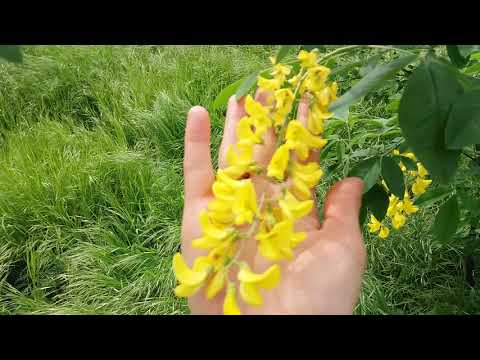

Watch this video on YouTube

